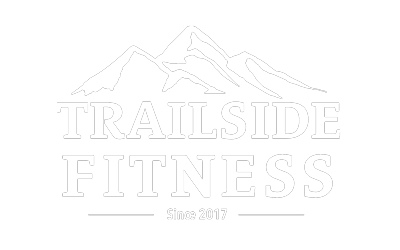Cardio and endurance training for hikers
Why is cardio and endurance training for hikers to important? By doing some “off foot” training, you can decrease stress on your joints and improve your hiking performance. I’ll give you some simple workouts to help boost your endurance and pump up your cardio to make your hikes much more pleasant. These workouts are easy to do and fit every fitness level.Â
Why train your cardio for hiking?
Cardio and endurance training for hikers is an important piece of pre-hike conditioning. If you think about it, most of the time while hiking you aren’t red-lining your efforts while hiking. Aside from steep hill sections, your effort is more of a sub maximal effort. That’s what your training should look like.
One way to improve your cardiovascular efficiency and endurance along with muscular endurance is to exercise at a level consistent with the needs for your sport.
For this, we will be using the Rate of Perceived Exertion scale. This is a very simple way of keeping your effort in the sweet spot and not over or under dosing your output. For these workouts, we will be staying in the 4-6 RPE range.Â
Give nasal breathing a try during your workout. This might sound counterproductive, but physiologically it’s a boost for your body. Nasal breathing allows your body to regulate oxygen and CO2 levels easier and also helps open up blood vessels quicker than mouth breathing. Remember, these workouts are well below maximum output.Â
It’s fine to rise up into the 7-8 for a short spell but that’s not where you want to spend most of your time.

Low impact training for hikers
Using machines like an air bike an a rower offer lots of benefits. For starters, they are low impact which is great for irritable joints. They also carry a low risk for injury. Additionally, they require minimal skill to actually use. It’s perfect for new gym goers and seasoned athletes alike. Let’s look at some of the more common exercise equipment you’ll likely find.Â
Air Bike
This is an excellent option for those who have knees, hips or other issues that become irritated with exercise. An air bike  machine is actually made to use with any combination of limbs including just arms, an arm and a leg or any other creative combination you need.Â
Don’t fear this machine! It’s great for recovery days or finishing a workout. Additionally, it offers a nice full body workout and leaves you feeling tired but ready for the next workout scheduled. Remember to use the RPE scale and keep yourself in the target zone of 4-6.
Rower
The rower requires some basic form knowledge. Fear not! Getting started there is pretty easy with many great videos to walk you quickly through proper form. Concept 2 or Dark Horse Rowing have some wonderful videos to help you. I walk you through the bike set-up and form in the video link at the top of the article.
I recently found that Concept 2 has workout podcasts that are excellent for working out too. The trainer takes you through a warm up, workout, and cool down. They also give you form tips along the way, which I found really handy.
Dark Horse Rowing has some great workout videos to row along with too. Again, they offer the benefit of watching the form and walking you through a workout from start to finish. I highly recommend these and use them often for my workouts.
The Workouts
Start the workout with a row/bike for 5-10 minutes to warm up and work on form. End the workout with light effort for 5-10 minutes and stretch.
Option 1 – Steady Pace
Set a pace and maintain for time, distance, or cadence. A good time frame to start out with is 20-30 minutes. Keep that RPE in mind during the workout and if you need to reduce or increase effort to stay in the 4-6 range, do so.
For the rower a 5000 meter row is a great steady pace workout. It typically takes 20-30 minutes to complete. Use the RPE chart and know that it may take a time or two to figure out your pacing!
Option 2 – Light Intervals
Work for a measure and rest for 3-4x that amount of time. For example, work for 10 seconds, rest for 30 or 40 seconds and then repeat. This will give you some variety and makes the workout more engaging than sticking with a steady pace.
These intervals are at a higher pace than your warm up and closer to 6-7 on the RPE scale. The recovery should be long enough for beginners to recover before the next round starts. Begin with 6-8 rounds and work up to 10. These make a great finisher or warm-up for a workout.
Option 3 – Pyramids
Pyramids are 1:1 ratio of work to rest. In this workout you work up to 4 minutes and then work back down to 1 minute. A simple pyramid of cardio and endurance building bliss.Â
- Row/Bike 1 minute, rest 1 minute
- Row/Bike 2 minutes, rest 2 minutes
- Row/Bike 3 minutes, rest 3 minutes
- Row/Bike 4 minutes, rest 4 minutes
- Row/Bike 3 minutes, rest 3 minutes
- Row/Bike 2 minutes, rest 2 minutes
- Row/Bike 1 minute, rest 1 minute
These can be as intense or steady as you wish, but try to stay consistent with the average effort each segment.
Wrapping it up
For a long distance hiker, training cardio and endurance 2-3 times per week is typically enough. One of those days should be hiking with a pack following a smart progression leading up to your start day. That leaves the door open for 2 strength sessions and some rest & recovery for the week.
If you’d like to learn more, reach out or consider online personal training with me. Follow this link for more information!


Recent Comments